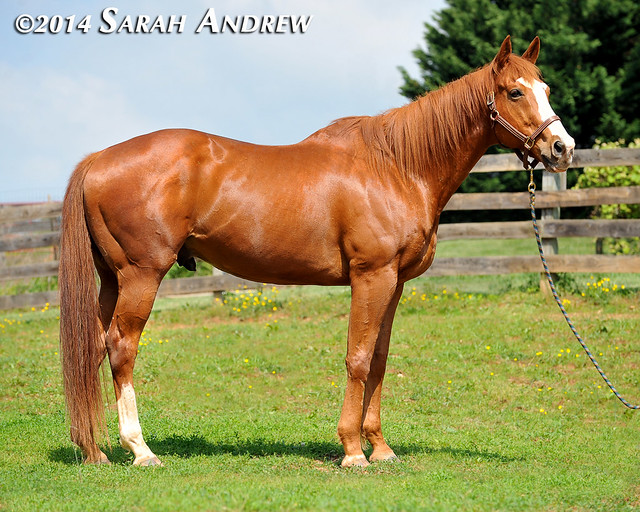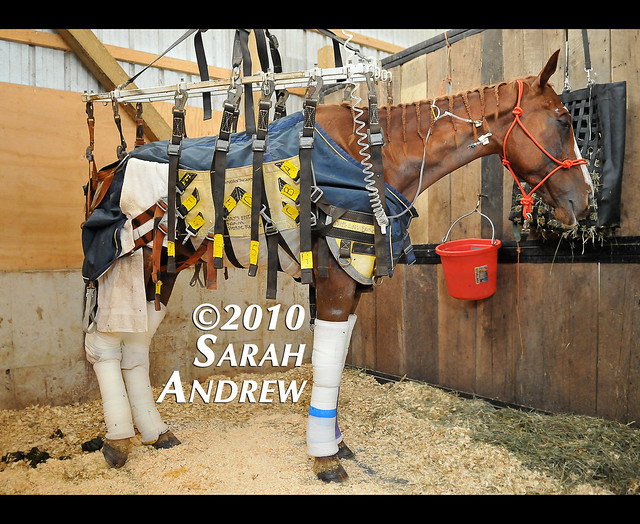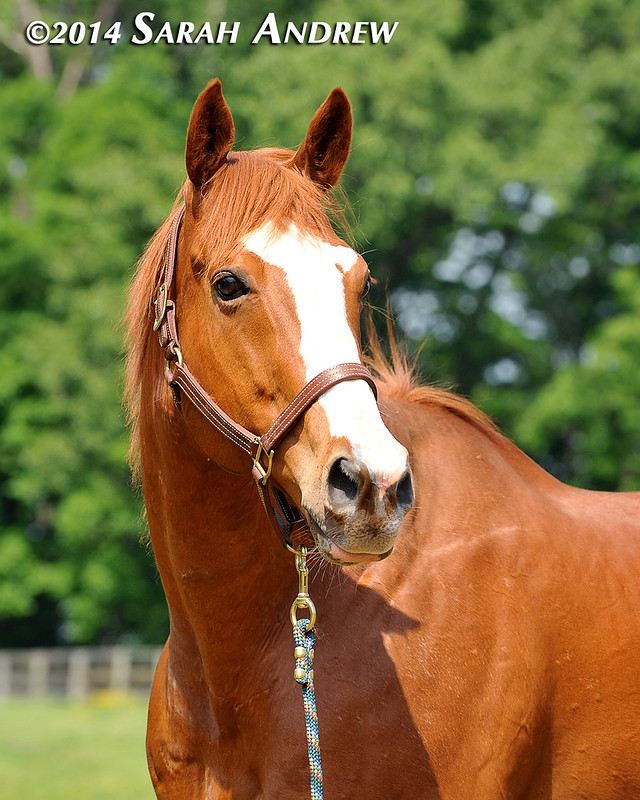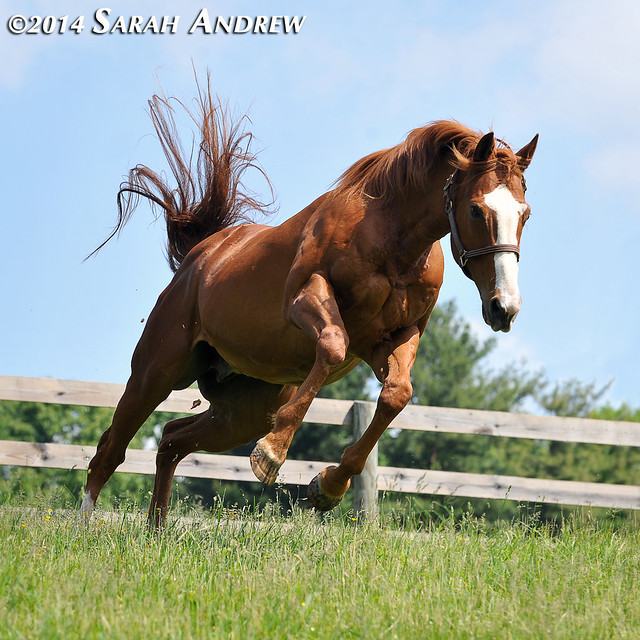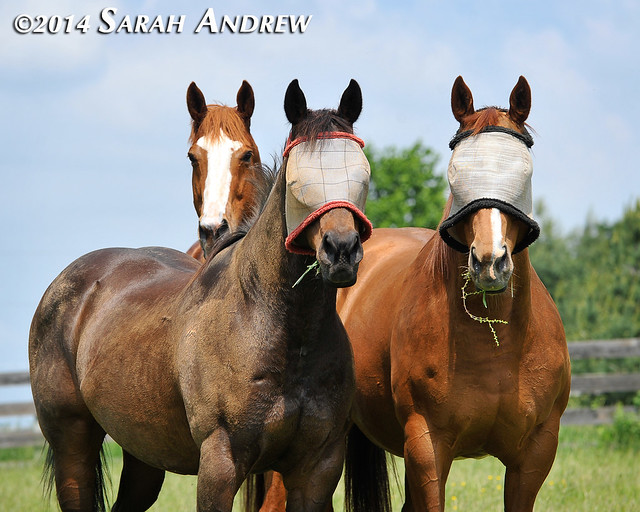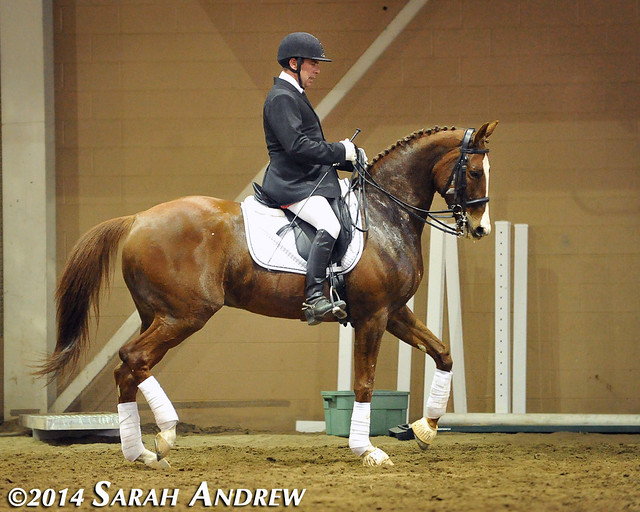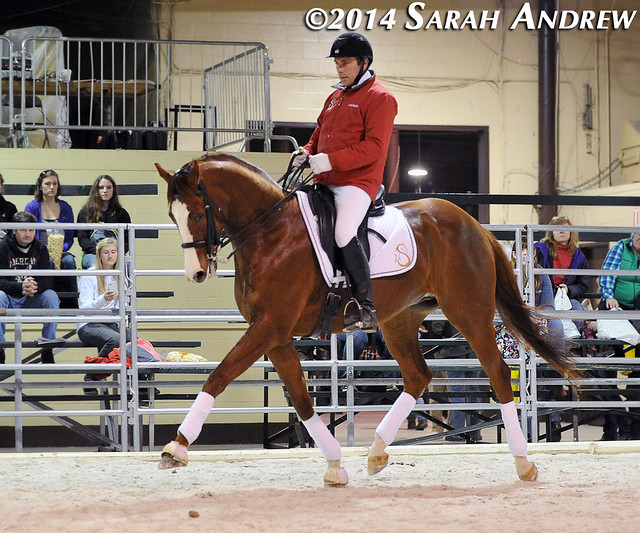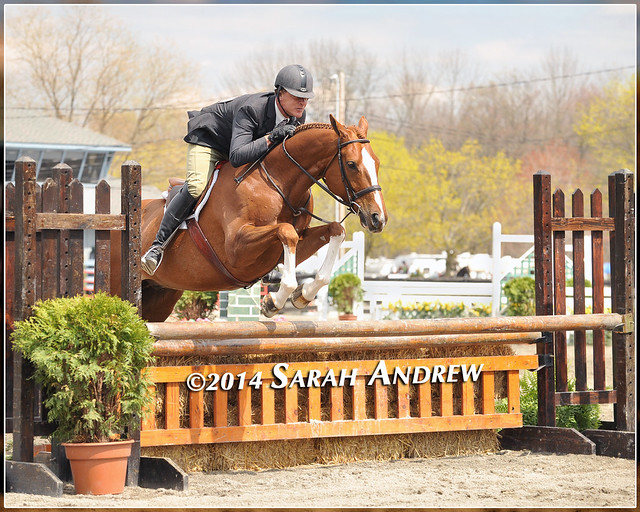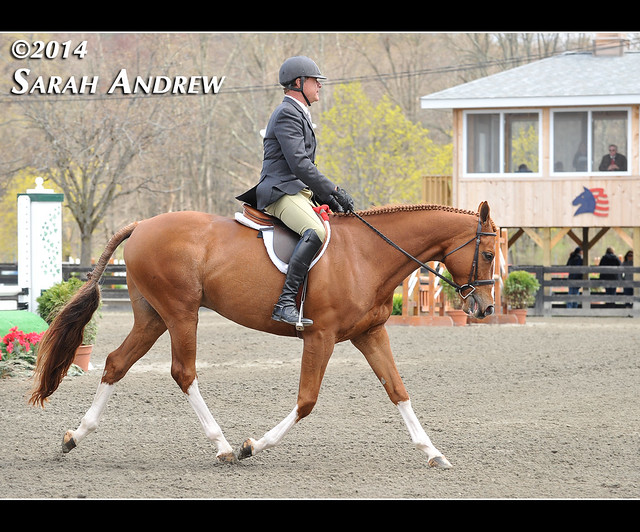What if there were a revolutionary training method that improved horses’ oxygen delivery capacity
and thus their aerobic power and stamina? Such a method seems to exist, but digging for the story is daunting because most of its practitioners are not interested in spreading the word.
Anecdotal evidence abounds that high-altitude training improves the performance of Thoroughbreds. Canonero II, an outlandish Kentucky Derby outsider (500-1 in the Caliente book), shipped in (and down) to win the 1971 Derby. He had raced in Venezuela at 3,704 feet above sea level, lower than Denver, but still considerably higher than most American race tracks.
The inspiring Canonero story is too exquisitely complex to detail here--see Steve Haskin's 2011 piece. Was high-altitude living and training a factor in Canonero’s Derby and Preakness victories? One piece of evidence says yes: Canonero’s pre-Preakness electrocardiogram. Haskin writes: When a Baltimore radiologist, Dr. George Burke, took an electrocardiogram of the horse, he discovered his heartbeat was only 30 beats per minute, which was five less than the average horse. “Fantastic,” Burke said. “That’s as low as a horse will go.”
Following Canonero’s Preakness win, the effects of the altitude should have begun wearing off, but his loss in the Belmont could have also been attributed to physical ailments. The following year, stabled in the USA, his career did indeed tail off with life at sea level. However, the following year he beat Riva Ridge by five in record time in the Stymie at Belmont.
Mine That Bird (Birdstone) also shipped down, from the 6,500 ft. altitude in New Mexico, to win the 2009 Kentucky Derby at 50-1. Sid Gustafson, a specialist in Thoroughbred sports medicine and equine behavior, attributed the win to altitude training.
I have accumulated other pieces to the puzzle, including stories of horses that had overachieved after shipping down from mile-high Arapahoe, with confirmations from the trainer that his precise intention had been to descend in altitude just before the race.
The logistics and expense of training horses at Arapahoe, Ruidoso or other high-altitude venues and then shipping down will discourage most trainers from trying the method. But some owners and trainers who believe in the altitude factor are resorting to hypoxic (oxygen reduced) stabling of horses in climate-controlled stalls.
In 2003, Howe and Swanson presented their findings on the subject, in “Athletic Performance and Altitude Response in horses exposed to simulated altitude (3658 meters).” “Through the use of the latest altitude simulation technology as a training aid, trainers are realizing increases in aerobic power and endurance that reflect the horse’s true genetic potential,” the researchers noted.
Their study advocates “living high and training low”: The proven advantages of the 'live high, train low' approach to altitude training are that horses can benefit from the physiological effects of altitude acclimatization without suffering the untoward effects of chronic altitude exposure. High-low training allows for the beneficial physiological adaptations from exposure to hypoxia with
concurrent maintenance of high intensity exercise because of maximal oxygen flux during low altitude training.
Some high-profile human athletes abide by this approach. Notably, Olympic swimming champion Michael Phelps admitted that he was sleeping at 8,500 to 9,000 feet, in an altitude chamber (watch here).
In Australia, simulated high-altitude conditioning purportedly contributed to the success of Shamus Award (Aus) (Snitzel {Aus}), the first maiden to ever win the A$3 million-dollar G1 Cox Plate in Australia.
 |
| Shamus Award Racing and Sports |
“At his Flemington stables sit three stables that look a bit different to the rest. Shamus Award spends a fair bit of time in one of them. In layman’s terms, the oxygen is drawn out, emulating altitude training, like running in the mountains to increase lung capacity,” wrote Matt Steward in the Oct. 26, 2013 Herald Sun.
In 2012, Australian trainer Darren Weir incorporated simulated high-altitude training into his horses’ routines. “The trainer has enjoyed a seemingly blessed run of luck in the past 12 months, and is well on target to post his best season ever. Weir has trained nine country cup winners, becoming the first trainer to train 100 winners in Victoria for the current season.” (“Horse racing to reach new heights,” by Aaron Hamilton, On the Record, March 26, 2013)
The specially designed altitude simulator was purchased for Weir with the help of Gerry Ryan. Ryan is connected with the 2010 G1 Melbourne Cup winner Americain (Dynaformer).
Individual success stories become newsworthy, but as a horseplayer, I would like to know the return on investment for all horses using reduced-oxygen climate controlled stalls. Even the most down-and-out horseplayers offer their big-score stories as a smokescreen for their negative bottom line.
The wife-husband team of Dina Alborano and Don Carmody manufacture climate-controlled horse stalls, with floor-to-ceiling kickboard, rubberized walls, a pure-air monitor, a power-failure ventilator system, and generator limiters that simulate high-altitude training for their company called Equine Altitude .Com.
Both are athletes who have used high-altitude simulation in their own training regimens. But their clients are secretive about using the stalls. Once Shamus Award became a lucrative breeding prospect, his handlers denied using the stalls supplied by Equine Altitude, Alborano said.
Dina Alborano told me that harness trainer Noel Daley used their product on Hambletonian winner Broad Bahn, so I phoned Daley and asked him if it was true. Daley told me that Broad Bahn stayed in the self-enclosed simulated altitude stall for “12 hours per day, for five to six months prior to his Hambletonian victory.”
However, Daley also used the stall for a 3-year-old filly and “with the filly I didn’t see a huge difference,” he said. “The stall is a bit claustrophobic and I would have liked to have a bigger stall that could contain a treadmill.”
Even with the dominating Hambletonian victory of Broad Bahn, Daley remains skeptical about the live-high-train-low approach and would prefer his horses to live high and train high as well.
I am a visceral believer in “live high and train high” because I’ve tested it on myself and felt the tremendous boost when running and bicycling at sea level. Right off the plane after descending from my residence at 12,000 feet to sea level, I could literally run all day.
Nairo Quintana, the Colombian cyclist who finished second in the 2013 Tour de France and then won the demanding Giro de Italia in 2014, is not worried about his pedigree value, and so he openly confides on how he lives and trains in his native country at about 8,000 feet prior to his races.
Sifting through the scientific literature and anecdotal evidence, it’s not clear whether natural or simulated high-altitude training is ultimately superior. Personally I would rather travel and train high than sleep in a contraption.
But as more horse trainers explore the more practical mechanical method, questions have arisen about the fairness of the simulated version of altitude training.
Back in 2006, the ethics panel of the World Anti-Doping Agency (WADA) was considering banning altitude tents or altitude rooms because they violated the “spirit of the sport.”
However, two months later the same “World Anti-Doping Agency declared that altitude simulation does improve performance, but is not doping.” The decision to not ban hypoxic training was supported by the worldwide scientific community.
Four essential questions must be answered about the simulated high altitude:
Does it work successfully on horses?
Is it safe?
Is it doping?
Does it create an unfair advantage?
Does it work?
Dina Alborano claims that, “Every horse that has utilized our system has had increases in blood parameters. These increases are documented in RBC count [number of red blood cells], PCV [overall amount of cells in the blood], MCV [mean corpuscular volume, which includes number plus size of red blood cells], Hematocrit [the proportion of your total blood volume that is composed of red blood cells] and Iron Building Total Capacity.” (Bracketed definitions inserted by this writer.)
Even without seeing copies of before-and-after blood tests, most high-altitude medical specialists would not be at all surprised that hypoxic living would increase oxygen delivery capacity.
But does this translate into consistent improvement for race horses? We will not know for sure until those trainers who use the simulation techniques are forced to come forward with results that can be translated into statistics. (Of course, it’s in their interest to keep it a secret.)
Is it safe?
The high-altitude stall is a non-pressurized system and a low-oxygen environment that is unable to support fire. This is the opposite of the potentially dangerous hyperbaric chambers that use pressurized highly explosive compressed oxygen as a quick fix.
In hyperbaric therapy, air pressure/oxygen density is increased, which has caused occasional fatal fires. Furthermore, the suddenness of hyperbaric therapy involves physiological risks, including potential lung damage.
Once you mimic the “hypoxic” low-oxygen environment of high altitude, the chance of a fire decreases abruptly. On my first Christmas in La Paz, Bolivia, 12,000 feet above sea level, I was alarmed to see folks place lit candles on a carpeted floor. I blurted out “fire hazard”. What fire hazard? they said. There’s not enough oxygen to support a fire. (La Paz fire fighters have plenty of time to play cards and watch TV.)
Is it doping?
The World Anti-Doping Agency says it isn’t.
Altitude researchers Baker and Hopkins (“Altitude training for sea level competition,” in Sportscience Training & Technology. Internet Society for Sport Science. http://sportsci.org/traintech/altitude/wgh.html) explain the dilemma succinctly:
Altitude chambers, nitrogen houses and nitrogen tents would be dangerous if the simulated altitude was high enough and long enough to raise the thickness of blood to an unsafe level… so far, no one has made a public case for banning these devices on the grounds of health or safety. It also seems unlikely they will be banned as an expensive innovation, because they are no more expensive than the high-tech equipment used in training or performance by many Olympic athletes. If they aren't unethical, are they unsporting? Perhaps... Somehow it's less objectionable if the individual athlete pursues this avenue of performance enhancement via a personal altitude chamber or tent. Still, it will be a sad day when all endurance athletes have to spend weeks of their lives in such apparatus to keep up with other competitors. Can they be banned? No, because you can't ban normal altitude training, so it's unfair to ban a safe practice that makes it easier or cheaper for athletes to achieve the same effect.
Is it fair? The $64,000 question
A single high-altitude stall currently costs $64,000. This would clearly favor the wealthier stables.
Horseplayers need to demand disclosure: past performances should include whether or not a horse uses a simulated high-altitude stall, and if he does, how long he has been using it. This should be no different from transparency about the use of blinkers or mud caulks.
Trainers should go public about their use of simulated high altitude. The betting public should not be left in the clouds.







